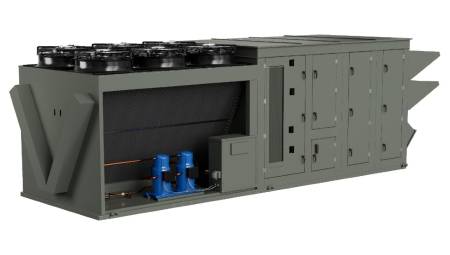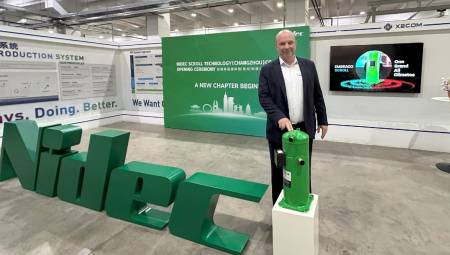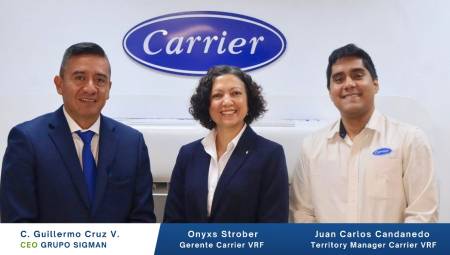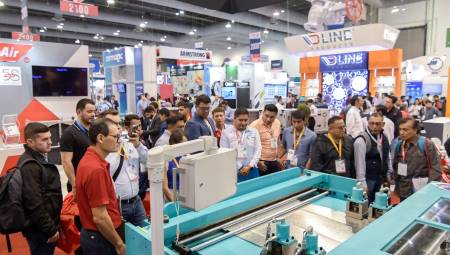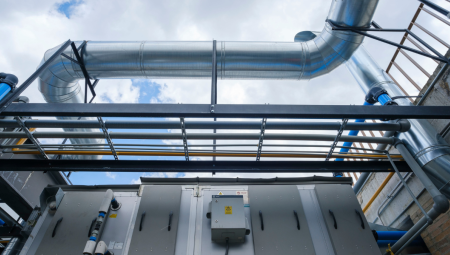United States. Carrier Global Corporation, a smart climate and energy solutions company, and Google Cloud have joined forces to improve the flexibility of the electric grid and promote more efficient energy management.
Under the leadership of Carrier Energy, Carrier's new energy solutions business unit, this alliance will integrate Carrier's battery-powered HVAC technology, available through its Home Energy Management (HEMS) solutions, with Google Cloud's AI-based analytics tools and WeatherNext AI models. developed by Google DeepMind and Google Research. This combination of technologies is expected to create a smart and connected energy ecosystem for residential customers.
The growth in electricity demand in the U.S., driven by reindustrialization, electrification of transportation, and the expansion of AI, presents both challenges and opportunities for utilities and consumers. Leveraging real-time energy forecasting and intelligent interaction with the grid, Carrier and Google Cloud are looking to optimize the balance between electricity supply and demand using Carrier's HEMS technology.
For homeowners, this solution will allow energy to be stored in batteries and used during periods of peak demand, when electricity costs are highest. Additionally, AI-powered WeatherNext models will optimize the operation of HVAC systems, improving efficiency and generating potential cost savings. The initiative will contribute to the reliability, accessibility and sustainability of energy for users.
This effort also supports Google's vision to develop carbon-free energy solutions to strengthen grid resilience. At the same time, it aligns with Carrier's goal of helping its customers avoid more than one gigaton of greenhouse gas emissions by 2030. Both companies will collaborate on innovative solutions to expand the network's capacity in the U.S., generating scalable benefits for communities.
"Across the country, we see an opportunity to build resilience in communities and implement innovative, clean energy solutions that foster economic growth," said Caroline Golin, Google's global head of Energy Market Development and Innovation. "Through collaboration with Carrier and across the industry, we hope to create change that benefits everyone."
Optimizing network efficiency
Initially announced at Climate Week in New York last fall, Carrier's next generation of heat pumps will incorporate battery storage, smart energy forecasting and grid-interactive capabilities. This will allow utilities to mitigate peak demand and improve energy efficiency.
By integrating Carrier's HEMS technology with Google Cloud BigQuery, Vertex AI, generative AI solutions, and WeatherNext forecasting models, the system will intelligently manage energy flows in real time. This includes charging, discharging, and redistributing energy based on grid conditions, energy demand, and weather forecasts, favoring a more balanced and sustainable grid.
Using energy stored in batteries during periods of high demand will help reduce pressure on the grid, especially at times when electricity has a higher carbon footprint. The project will be developed in phases until 2027, with the aim of a larger national adoption thereafter.
"Carrier's innovative approach to energy grid management solutions will help create a lasting positive impact on the U.S. energy landscape. By integrating Google Cloud's artificial intelligence and analytics with Carrier's intelligent HVAC systems, we are creating solutions that contribute significantly to a more efficient and resilient energy ecosystem," said Kyle Jessen, executive director, energy sector, Google Cloud.
As utilities, companies, and consumers adapt to an ever-evolving energy landscape, AI-based energy optimization will play a key role in grid resilience and electrification. With this collaboration, Carrier and Google Cloud are taking a decisive step towards a smarter, more efficient, and AI-powered energy ecosystem, benefiting not only homeowners, but also the technology infrastructure of the future.






